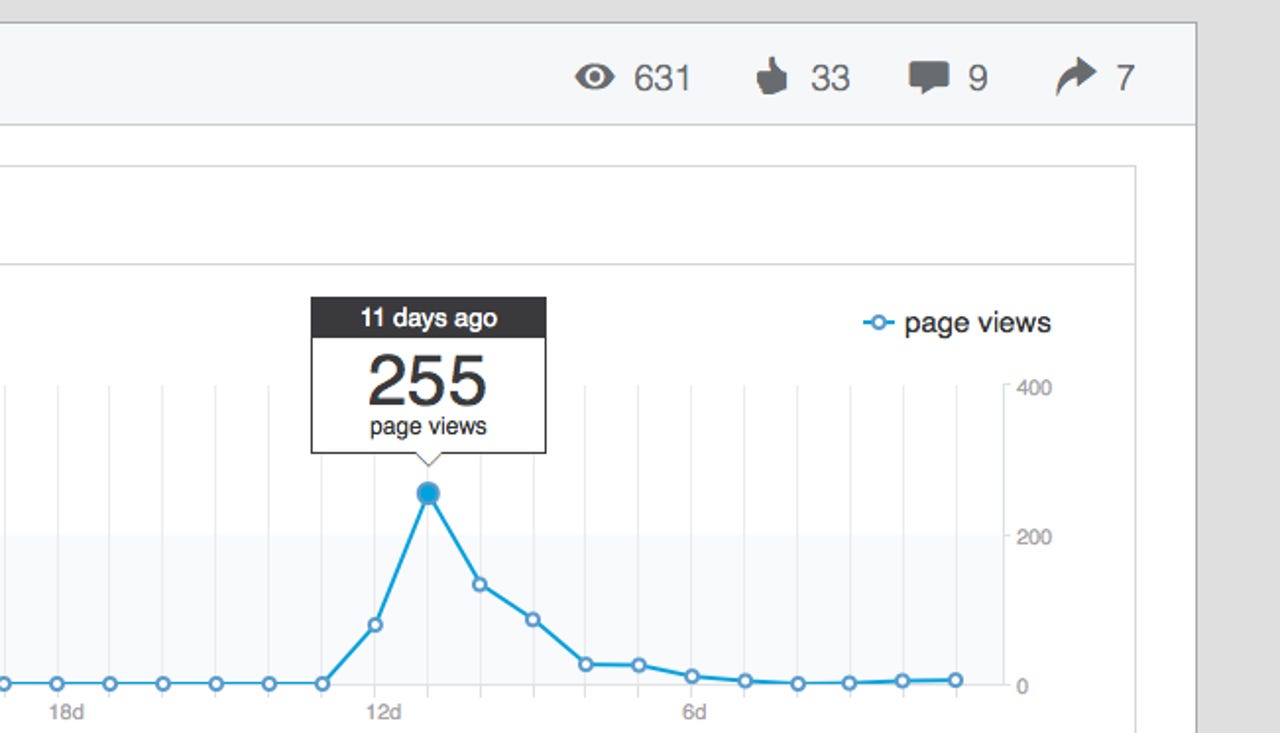LinkedIn adds analytics to bolster publishing platform


LinkedIn is bolstering its digital publishing platform ambitions with a helpful addition that could prove fruitful where it matters most: money.
Networking
That addition comes in the form of that other favorite quantifier in tech: analytics.
The new analytics toolset will offer a glimpse into the previous six months' worth of data and trends for all of a user's or brand's posts published on the professional social network.
The Mountain View, Calif.-based company touted this is the first time its members of more than 300 million worldwide and counting can identify exactly who is actively engaging with their posts.
Active publishers can achieve this when combing through an analytic summary of views, likes, comments and shares.
The idea is to offer publishers with a better understanding of who they are writing for, let them know a bit better about what resonates (or doesn't) with its readers, and ultimately reinforce LinkedIn as a more well-rounded communications service. Essentially, a digital version of a soapbox.
Admittedly the new pool of data could turn up a few surprises too.
"Looking closely above, I never knew I was so popular in Oregon, but I can see for the post detailed that the main traffic came from sharing the article in groups, with only a relatively small boost coming from being featured on the LinkedIn Pulse channel 'LinkedIn Tips,'" wrote David Petherick, a marketing professional based in Scotland who also happens to be a frequent publisher on LinkedIn.
Petherick credited being featured on Pulse, the digital newsreader app LinkedIn bought in 2013, as a major traffic driver as well as Google search engine results.
However, analytics aren't perfect, and LinkedIn acknowledged this data only applies to LinkedIn members logged in upon viewing -- meaning there still could really be a much more diverse set of viewers following a post, user or brand.
Image via LinkedIn